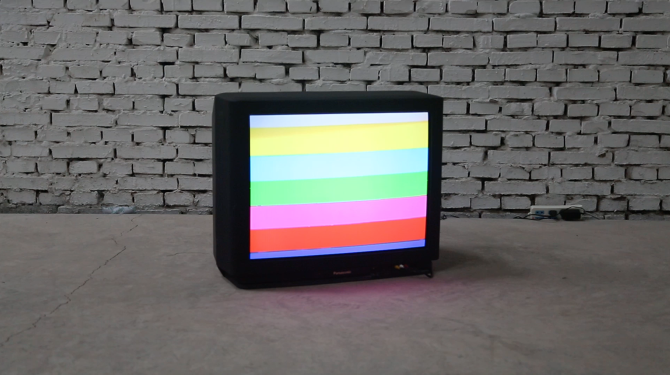In Dream from Zhou Yan on Vimeo.
DREAM, Single Channel Video, 2016
1080p, Stereo Sound, 2'49'' loop
Dream is a single screen audiovisual installation built upon the cinematic concepts of
deception and conspiracy. It is a paranoid and voyeuristic attempt to activate the static
color bars of an off-air television screen and to peep through the slits. The color stripes
are like cloth draped across the screen and playfully covering and revealing the
speculative beyond. When they occasionally open up to the luminous signal source,
these uncanny movements disrupt the composition of the television set and question
the seer’s perception of reality.
Dream draws its inspiration from the post-apocalyptic film Videodrome, 1983, which
predicts a future world where human beings are controlled by VCR players and TV
screens. Ironically, this wild fiction is gradually being validated: TV screens, computer
screens, cell phone screens – thousands of screens like tentacles help us access and
communicate with the virtual world and yet surveil us by their perpetual omnipresence,
strangling us tight. We look at the screen and we believe what we see; we mechanically
type on the keyboard and we think we have control over the machine. And yet little do
we speculate what’s beyond the screen. Lurking on the other side of the screen there
exists an artificial void, within which a fleshy form of existence defies our satisfaction of
control...
梦境的创作灵感来源于后启示录风格电影《录影带谋杀案》(videodrome),电影中预言了未来人类被由录像机和显像管电视所组成的媒体世界所控制。讽刺的是,现在人类正通过一次次的科技进步去实现这一预言。数以万计的屏幕如同触手般帮助我们与虚拟世界进行沟通的同时也在监视着我们的一举一动。注视着屏幕,我们相信所见即所得。通过对屏幕的控制我们相信自己也在操纵着机器。而我们所未知的是:一直以来潜伏在屏幕背后的人工虚无,正通过自我意识的重建对抗着我们由控制带来的满足感。
这件视频装置由游戏引擎驱动,模拟电视机频道维护提示的彩条会根据内部信号的频率发生变化,通过模仿百叶窗的方式开合,吸引观看者窥探屏幕的内部。这一系列不可预知的变化试图打破电视的媒介定义,同时引发观看者对媒介的质疑。



